标签:导航 技术 collect 提示 模板引擎 cal 两种 区别 hello
开发回顾:
JavaWeb开发使用JSP技术,所有的页面文件必须是JSP,才能接受数据处理
JSP的好处是,数据交互方便,有JSTL补充
SpringBoot的区别:
我们最终的项目是一个jar包
内嵌了Tomcat,这是不支持JSP的
纯静态页面的数据交互成技术难点了
解决方案:
模板引擎 TemplateEngine
常见的模板引擎:
- 初代目:JSP、JSTL、
- Thymeleaf
- Freemarker
- Velocity
1、在页面中写入模板【表达式】
2、由服务器传输数据,交给模板引擎
3、模板引擎处理数据注入到页面的模板中
4、最后在页面上生成我们想要的效果
【要注意,模板引擎的本质是对文档的Dom对象进行操作】
1、引入Thymeleaf
maven坐标
<dependency> <groupId>org.springframework.boot</groupId> <artifactId>spring-boot-starter-thymeleaf</artifactId> </dependency>
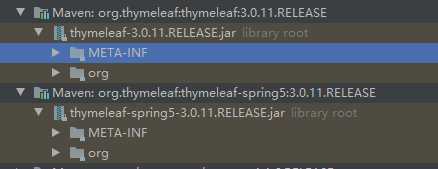
2、默认的模板位置

也就是resources.templates目录下
Thymeleaf会自动渲染这个目录内的所有页面
编写控制器
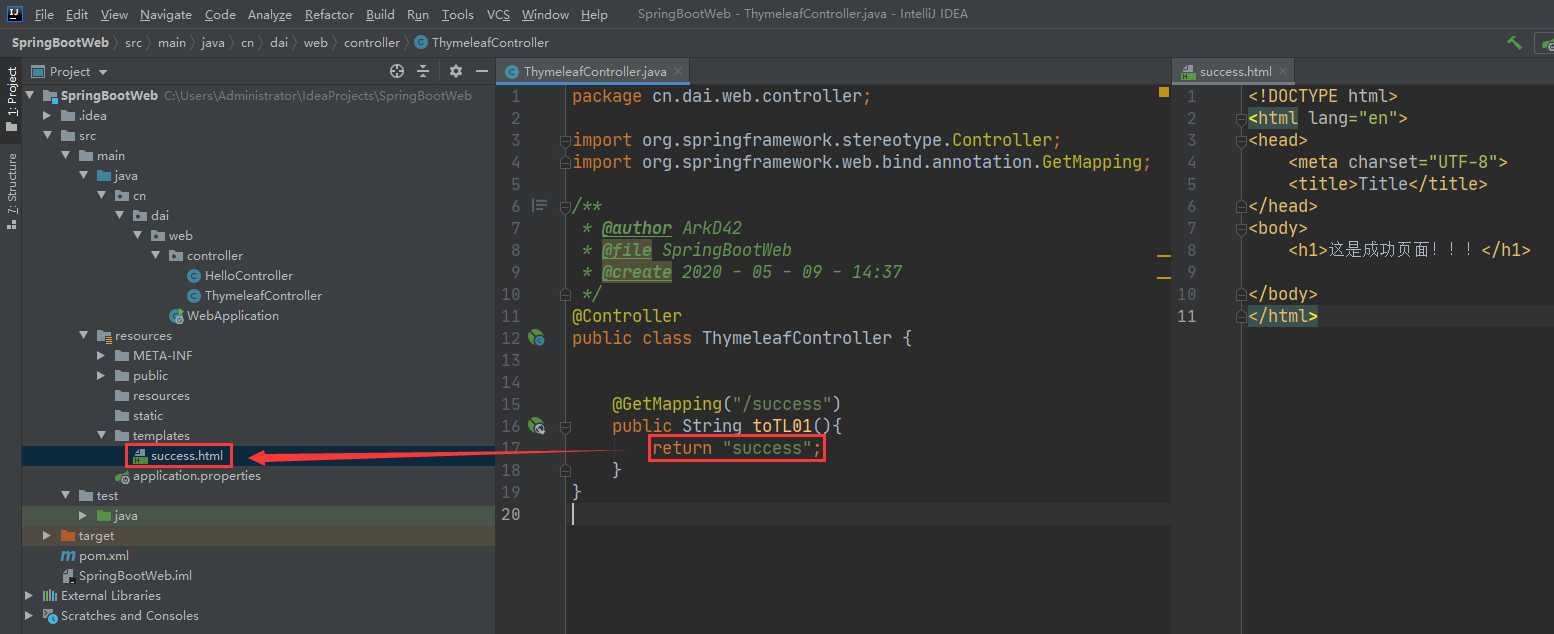

首先,被渲染的模板页面需要导入Thymeleaf的TL约束
这个约束可以不打,就是会没有提示信息
<html lang="en" xml:th="http://www.thymeleaf.org">
但是在IDEA的编写过程中是提示这个约束
<html lang="en" xmlns:th="http://www.w3.org/1999/xhtml">
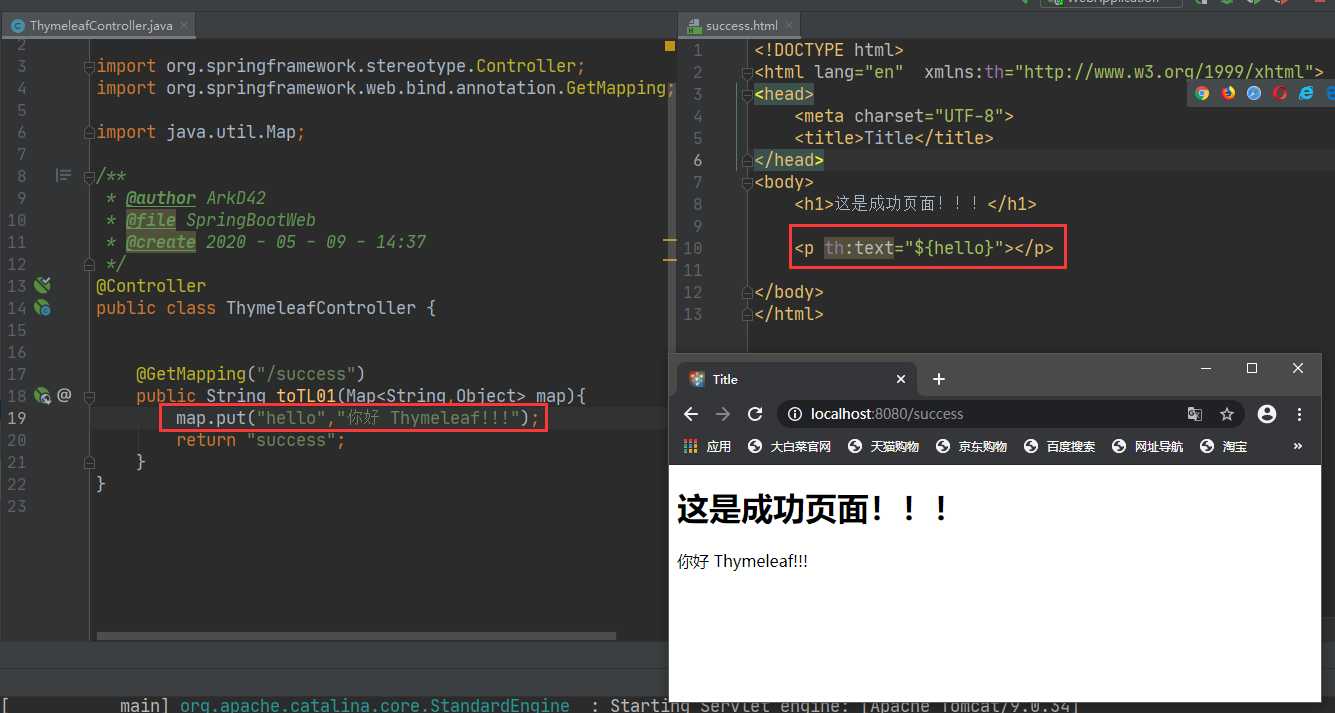
改变当前元素的文本内容
<p th:text="${hello}"></p>
凡是元素具有的属性,只要在前面加 th:
这个属性的值就可以被模板引擎进行交互
th的值会替换当前元素原有的文本内容
【可以替换原生元素的属性值】
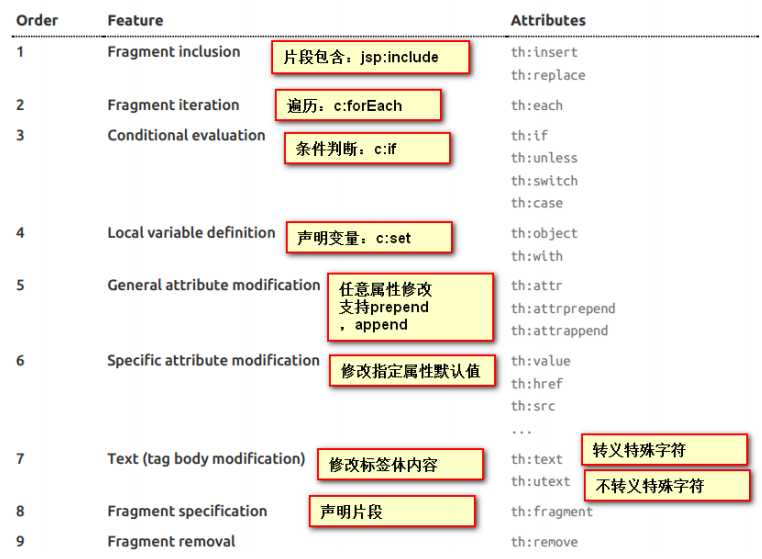

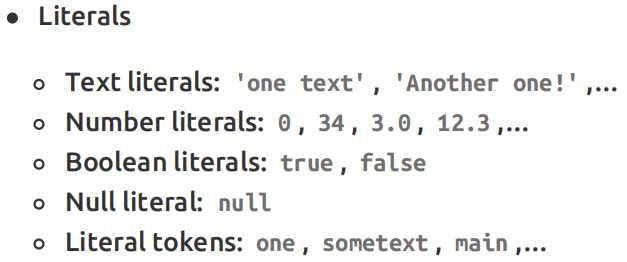






字面意思是【不操作】,用于三元运算的操作取消?

关于OGNL官网的详细介绍
http://commons.apache.org/proper/commons-ognl/
这种表达式用于获取变量【即对象、属性、值】
${Value}
可以使用对象引用属性的方式获取值
/** Access to properties using the point (.). Equivalent to calling property getters. */ ${person.father.name}
或者按对象的属性标识符来获取
/** Access to properties can also be made by using brackets ([]) and writing
the name of the property as a variable or between single quotes. */ ${person[‘father‘][‘name‘]}
如果对象是一个Map,则点和括号语法将等效于对其get(…)方法执行调用
/** If the object is a map, both dot and bracket syntax will be equivalent to
executing a call on its get(...) method. */ ${countriesByCode.ES} ${personsByName[‘Stephen Zucchini‘].age}
数组和List集合的引用
/** Indexed access to arrays or collections is also performed with brackets, writing the index without quotes. */ ${personsArray[0].name}
你甚至可以写方法,和参数!?
/** Methods can be called, even with arguments. */ ${person.createCompleteName()}
${person.createCompleteNameWithSeparator(‘-‘)}
在对上下文变量求值OGNL表达式时,某些对象可用于表达式以获得更高的灵活性。
这些对象将被引用(根据OGNL标准),从【#】符号开始

除了这些基本对象之外,Thymeleaf还将提供一组实用程序对象,
帮助我们执行表达式中的常见任务。
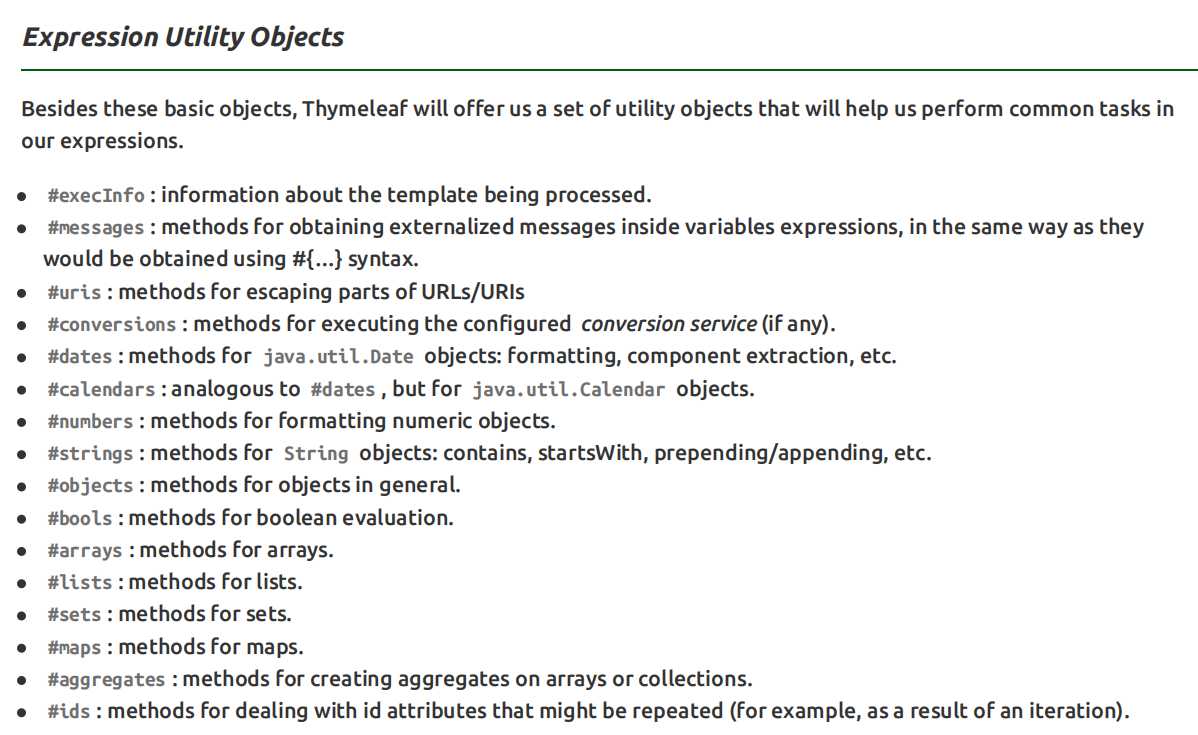
${Value}
- 表达对象、属性、值
- 表达对象的属性、
- 配合内置基本对象
- 配合内置工具对象
*{SelectionValue}
用于配合th:object表达式使用
官方的实例说明:
父类元素的th属性获取了这个表达式的对象
然后,里面子元素,可以使用*{}表达式直接调用父元素的这个object属性
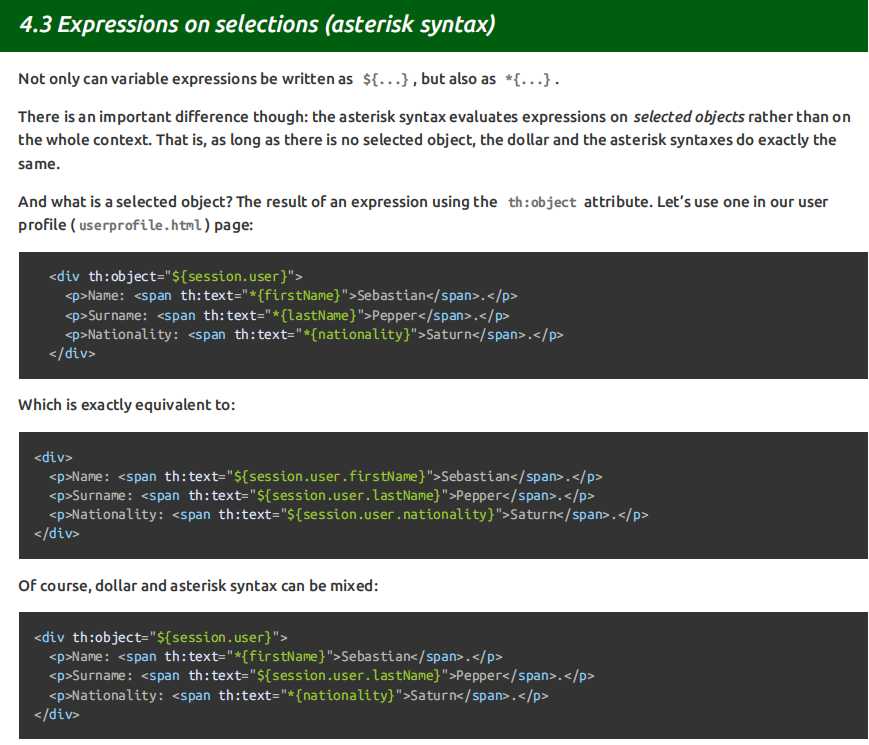
消息表达式:
Message Expressions: #{...}
用于I18N的国际化
连接表达式:
Link URL Expressions: @{...}
用于定义链接,使用模板引擎声明URL的好处就是
- 动态注入连接参数
- 不需要写完整协议,从工程名后面开始即可
片段表达式:
Fragment Expressions: ~{...}
用于抽取封装HTML片段,提高可重用性
th:text 是不转义的表达式,我们写入<h1>text</h1> 会识别为文档标签
th:utext 是转义的表达式,我们写入<h1>text</h1> 会转义当成文本处理
遍历的属性表达式,prod表示遍历的变量,就是当成对象一样获取数学

th:text == [[ ${Value} ]] th:utext == [( ${Value} )]
不推荐使用这种写法,如果没有获取到,页面将会解析这个表达式出来,
影响美观,泄露数据安全
【SpringBoot】11 Web开发 Part2 模板引擎
标签:导航 技术 collect 提示 模板引擎 cal 两种 区别 hello
原文地址:https://www.cnblogs.com/mindzone/p/12858011.html